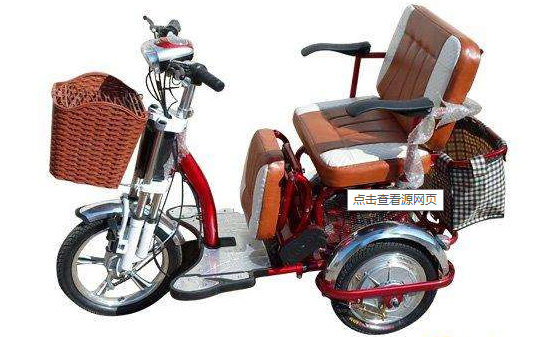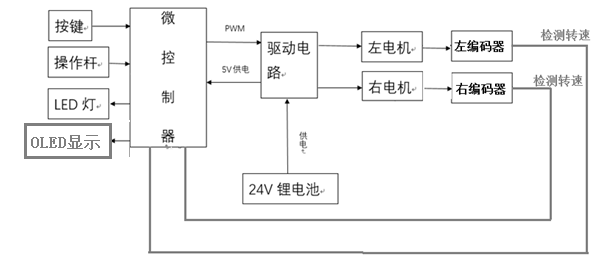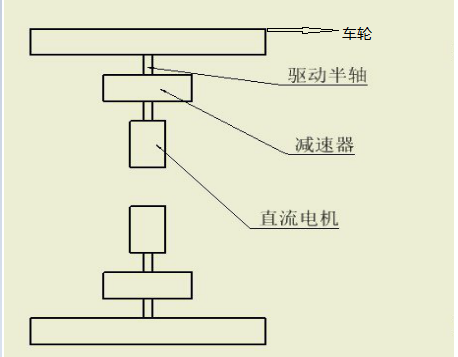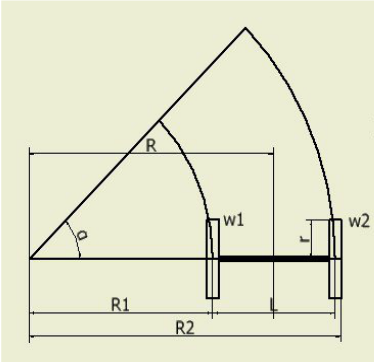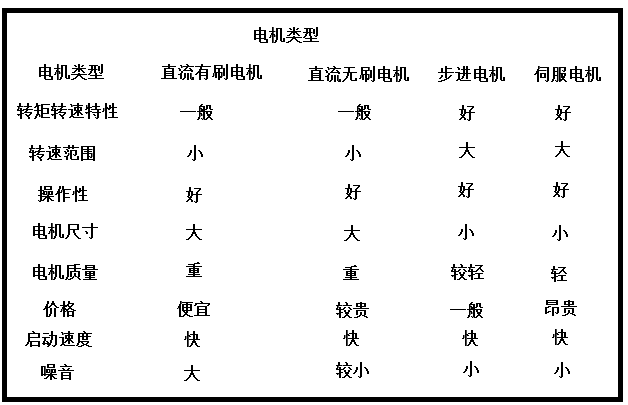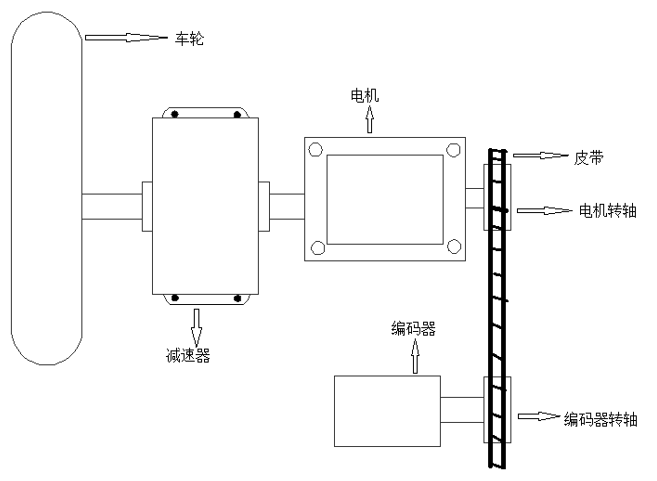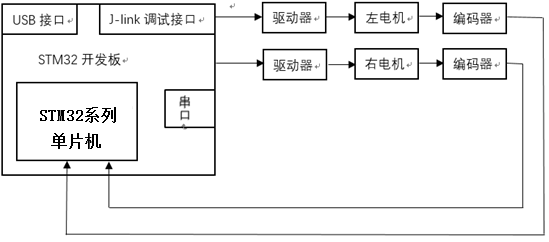基于ARM单片机的电动轮椅车设计毕业论文
2020-06-17 21:45:19
摘 要
电动轮椅通俗的讲就是用蓄电池作为电源,无需人力的推动就能行驶的一种新型轮椅。电动轮椅最主要的部分就是控制部分和驱动部分。控制部分以单片机为核心处理器,由于单片机IO口的驱动电流无法驱动电机,因此需要增加驱动部分。驱动部分完成的任务就是对单片机发出的信号进行放大进而驱动电机的运转。本文单片机采用ARM公司生产的 STM32F103RBT6 芯片作为微处理器,电机部分选择直流有刷电机。
本文最先介绍了电动轮椅的国内外发展现状,并且确立了本文主要设计内容。接着对总体设计方案进行了详细的讲解。硬件方面主要介绍了电源模块、驱动模块、电机模块以及编码器的工作原理;软件方面详细阐述了如何用定时器产生PWM波形来驱动电机以及电机控制的关键函数,最后对电机转速和编码器进行了调试。
关键词:电动轮椅 直流有刷电机 编码器 STM32F103RBT6 单片机
Design of Electric Wheelchair Based on arm
ABSTRACT
Electric wheelchair is a popular use of the battery as a power supply, without the need for human driving can drive a new type of wheelchair. The most important part of the electric wheelchair is the control part and the drive part. Control part of the microcontroller as the core processor, because the microcontroller IO port drive current can not drive the motor, so need to increase the drive part. Drive part of the task is to complete the task of the single-chip signal to amplify and then drive the motor running. This article uses ARM STM32F103RBT6 chip as a microprocessor, the motor part of the choice of DC brush motor.
This paper first introduces the current situation of electric wheelchair development at home and abroad, and establishes the main design content of this article. Then, the overall design of the project is explained in detail. Introduces the hardware module, motor drive module, power supply module and encoder principle; the software described in detail how to use the timer to generate PWM waveform to drive the motor and the key function of motor control, the rotational speed of the motor and encoder debugging.
Key words: electric; wheelchair; DC brush motor; encoder STM32F103RBT6
目 录
摘 要 I
ABSTRACT II
第一章 绪论 1
1.1 引言 1
1.2 课题的目的以及研究意义 1
1.3 电动轮椅在国内外的发展状况 1
1.3.1 国外电动轮椅的发展状况 2
1.3.2 国内电动轮椅的发展状况 2
1.3.3 电动轮椅的应用领域 3
第二章 系统的总体方案设计 4
2.1系统的功能要求 4
2.2 控制系统的总体结构和原理 4
2.3 驱动及转向系统方案 5
2.3.1 驱动及转向系统的选择 5
2.3.2 后轮驱动的优点 6
2.4 电机选型 6
2.5 电机测速 6
2.5.1 电机测速方法的选取 6
2.5.2 编码器测速原理 7
第三章 系统硬件设计 8
3.1 微处理器的介绍 8
3.1.1 STM32F103RBT6芯片的介绍 8
3.2 电源模块的介绍 8
3.2.1 AMS1117低压差稳压器的介绍 9
3.2.2 AMS1117-3.3低压差稳压器电路 9
3.3 驱动电路模块的介绍 10
3.3.1 AQMH3615NS V0.92驱动模块 10
3.3.2 驱动模块电气参数 12
3.3.3 控制信号接口 12
3.4 编码器的介绍 13
3.4.1 旋转编码器的工作原理 13
3.4.2 编码器的输入输出段回路图 14
3.4.3 OMRON E6A2-CW3C旋转编码器的参数 15
3.5 串口模块 15
3.6 系统接线图 16
第四章 系统软件设计 18
4.1 软件平台的介绍及如何使用 18
4.2 如何用定时器产生PWM波形 19
4.2.1 产生PWM波形的原理 19
4.2.1 PWM输出的程序设计 20
4.3 电动轮椅位置及速度的确定 21
4.3.1 编码器脉冲值的读取 21
4.3.2电动轮椅位置的确定 22
4.3.3电动轮椅速度的确定 23
4.4转速闭环控制的实现 23
4.4.1 PID算法控制 24
4.4.2 转速闭环控制设计 25
4.5电机控制设计 25
4.5.1定时器的配置 25
4.5.2 小车运行状态的设计 26
4.5.3 电机回路程序设计 27
4.5.4 电机速度程序设计 28
第五章 系统调试 29
5.1 系统软硬件的调试 29
5.1.1 转速闭环控制的调试 29
5.1.2 电机差速调试 30
5.2 调试所遇到的问题 30
5.3 编码器的调试 30
第六章 总结和展望 32
6.1 论文总结 32
6.2 课题研究展望 32
参考文献 34
致 谢 36
第一章 绪论
引言
相关图片展示:
